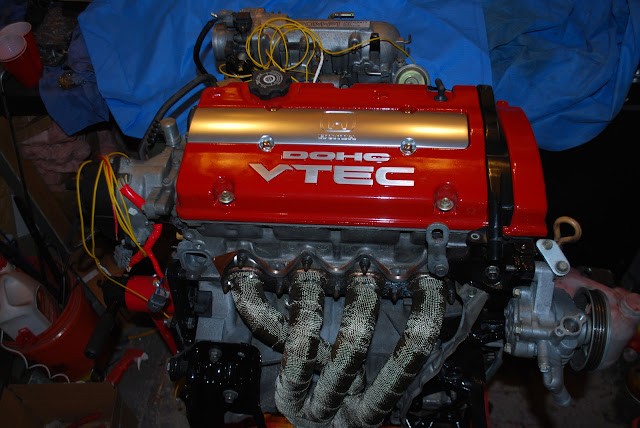Swapping a JDM H22A engine into an older Honda Accord is a popular upgrade. However, using an OBD2 H22A presents unique challenges. This article documents a personal experience swapping an OBD2 H22A into an F22 chassis, focusing on key differences and solutions for a successful integration. This swap utilizes the OBD2 engine harness and sensors, with the exception of the ECU, where a JDM P13 will be initially used, later transitioning to a Hondata S300 in a chipped P28.
Key Differences between OBD1 and OBD2 H22A Engines
Several key distinctions between OBD1 and OBD2 H22A engines require attention during the swap:
- MAP Sensor Location: The OBD2 H22A features a MAP sensor mounted on the throttle body, unlike the OBD1 version.
- Distributor Connector: The OBD2 distributor has a single plug connector, while the OBD1 distributor utilizes a two-plug connector.
- Fuel Injectors: OBD1 H22A engines use low impedance injectors, whereas OBD2 engines utilize high impedance injectors. This difference impacts wiring and ECU compatibility.
- VTEC Oil Pressure Switch: Many OBD2 JDM H22A engines lack the VTEC oil pressure switch found on OBD1 engines. This may require sourcing an alternative solution for VTEC engagement.
Addressing the OBD2 Challenges
This swap aims to utilize as much of the OBD2 engine harness and components as possible, minimizing cost and complexity. Here’s how the key differences were addressed:
1. MAP Sensor Integration
While the Accord’s MAP sensor could be used, opting for the Prelude’s throttle body-mounted MAP sensor provides a more accurate reading by eliminating potential vacuum leaks. This requires rewiring the MAP sensor connector to match the OBD1 harness, following a specific wiring diagram.
2. Distributor Rewiring
Although the internal components of OBD1 and OBD2 distributors are often identical, the wiring differs. Careful examination revealed matching wire colors between the two distributors. By meticulously repinning the OBD2 distributor connector to match the OBD1 configuration, the OBD2 distributor functions seamlessly with the OBD1 harness.
3. Injector Compatibility
The difference in injector impedance requires bypassing the resistor box in the Accord’s wiring harness. This is achieved by soldering the five wires leading into the resistor box together, effectively eliminating its function and allowing the high impedance OBD2 injectors to operate correctly. While the OBD2 injectors have a lower flow rate (290cc) compared to the OBD1 injectors (345cc), the engine performed well, suggesting that the difference is manageable, especially with a tunable ECU like the Hondata S300.
Conclusion
Successfully integrating an OBD2 H22A engine into an older Honda Accord requires careful attention to the key differences between OBD1 and OBD2 systems. By addressing the MAP sensor, distributor, and injector discrepancies, this swap demonstrates that utilizing the OBD2 engine harness and components is a viable option. The engine runs strong with the modifications, proving the feasibility of this approach for budget-conscious enthusiasts.
